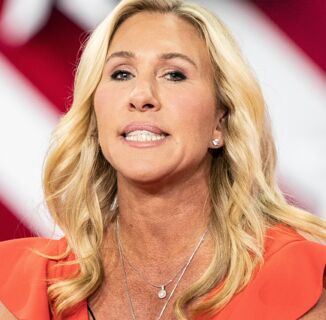The White House announced on Tuesday that it seeks to yet again rollback data collection on LGBTQ peoplethis time queer and trans youth.
Twice a year the Department of Justice (DOJ) releases National Crime Victimization Survey (NCVS), in which 135,000 households are polled about whether they have been targeted by a criminal act. Since 2016, that report has included questions on sexual orientation and gender identity.
The DOJ, however, says that teenagers may no longer be asked to identify their LGBTQ status in the survey.
In a notice released by the Federal Register on Wednesday, the U.S. Bureau of Justice Statistics reported it’s considering raising the minimum age at which teens can be asked questions about their sexual orientation and gender identity. Currently, youth must be 16 years old until that information can be requested. Now those individuals have to be at least 18.
The BJS, which is under the purview of Attorney General Jeff Sessions, claims the proposal is intended to address “concerns about the potential sensitivity of these questions for adolescents.”
But as The Williams Institute points out in a press release, vulnerable youth don’t need to be concerned about outing themselves if privacy or safety is an issue for them. If teenagers don’t wish to discuss their LGBTQ identity, they don’t have to. The question is voluntary.
“While we appreciate the potential sensitivity of these questions for some people, no one is forced to answer them,” says Director of Federal Policy Adam P. Romero.
“Youth have been answering questions about their sexual orientation for years, in numerous studies, as well as on federal surveys,” adds Blachford-Cooper Research Director and Distinguished Scholar Kerith J. Conron in a statement provided to INTO.
Losing vital data on LGBTQ teens could be a major detriment for those who want to understand the challenges faced by queer and trans young people. NCVS, one of the two major surveys on crime in the U.S., tracks the frequency at which individuals experience phenomena like burglary, theft, and sexual assault.
Statistics already show that LGBTQ youth are more vulnerable than their peers to experience victimization.
The 2016 Youth Risk Behavior Survey found that a third of queer and trans students had been bullied on their school’s campus within the past year. This population was twice as likely as their cisgender and heterosexual classmates to have another student threaten them with a knife.
But at the same time, LGBTQ young people are also disproportionately likely to be criminalized by the justice system. Statistics cited by the Center for American Progress show that roughly five to seven percent of young people identify as queer or transgender (although numbers vary widely between surveys), but they make up approximately 15 percent of youth housed in juvenile detention facilities.
Taking a hard look at these numbers allows researchers, community members, advocates, and politicians to come together and make changes that will affect the lives of LGBTQ teens, as GLSEN Director Eliza Byard argues.
“What’s measured is what matters when it comes to public policy,” Byard tells Mother Jones.
But policymakers may have their work cut out for them if the available data on LGBTQ lives continues to dwindle. Last year the Trump administration rolled back data collection on queer and trans seniors in federal surveys, while the Census Bureau announced it would not ask questions related to sexual orientation or gender identity in its 2020 report.
The Census hit back at the suggestion the decision was politically motivatedclaiming questions around LGBTQ identity were never under serious consideration. It will, however, ask about same-sex couples in the next edition of the decennial survey.
The BJS will be accepting public comment on the inclusion of LGBTQ youth in crime data until May 11.
Photo via Flickr/Alan Cleaver
Don't forget to share:
Help make sure LGBTQ+ stories are being told...
We can't rely on mainstream media to tell our stories. That's why we don't lock our articles behind a paywall. Will you support our mission with a contribution today?
Cancel anytime · Proudly LGBTQ+ owned and operated
Read More in Impact
The Latest on INTO
Subscribe to get a twice-weekly dose of queer news, updates, and insights from the INTO team.
in Your Inbox













